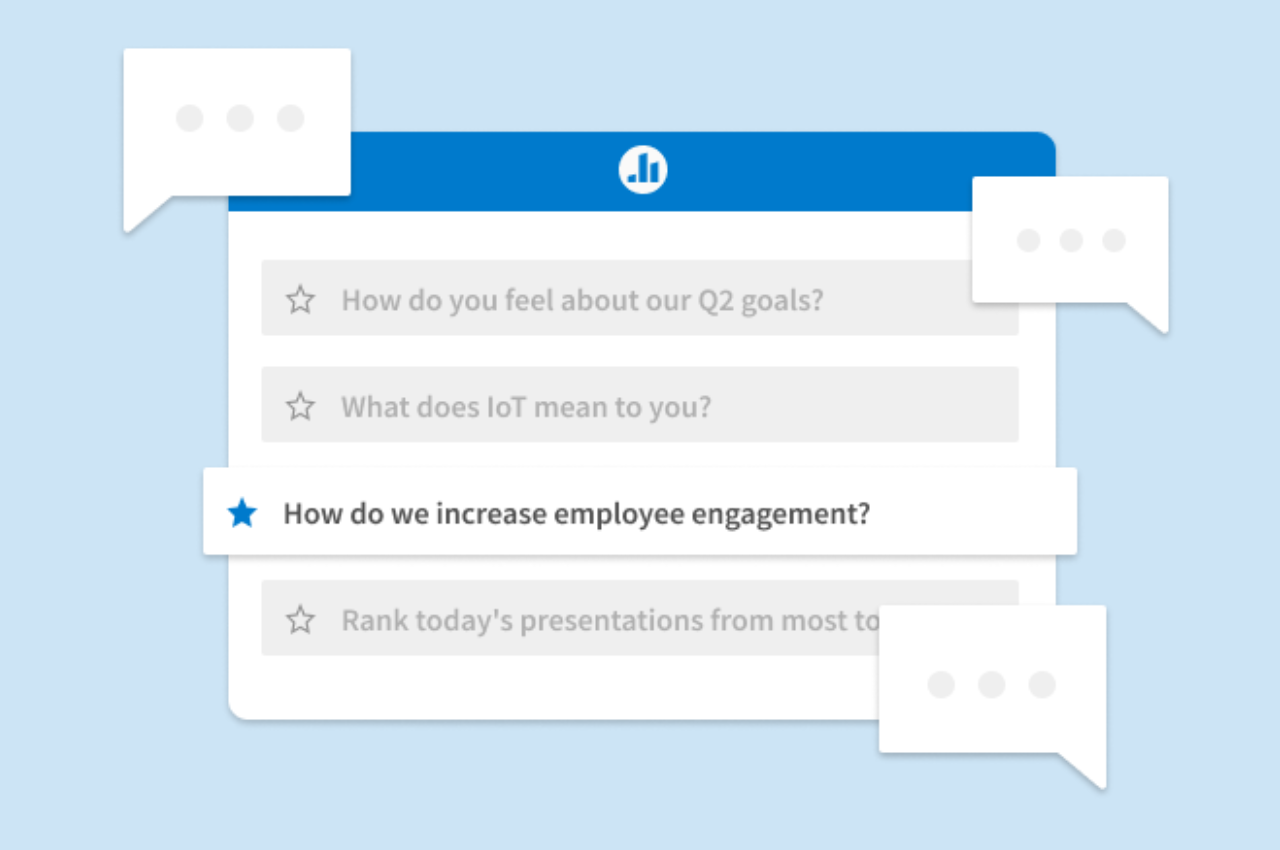10 employee engagement initiatives and why they work

Company culture is the difference between a workforce that’s going through the motions and a collaborative environment where people feel motivated to bring their best every day. And you can’t have a great company culture without engaged employees.
There’s a good reason employee engagement is a topic on many business leaders’ minds—it’s one of the primary predictors of business performance. When comparing high-engagement versus low-engagement business units, Gallup researchers found high engagement leads to better profitability, productivity, and customer loyalty. They also found highly engaged organizations enjoy reduced absenteeism, turnover, and safety incidents.
Investing in employee engagement initiatives is one of the best things you can do for the long-term health of your company. Considering Gallup’s State of the Global Workforce 2022 Report estimates the global cost of low engagement is around $7.8 trillion per year, spending a little to build a strong culture is an easy decision.
Regular employee engagement surveys are a great start. But without defined steps to address people’s concerns and increase employee buy-in, you’ll run the risk of being all talk and no action.
To give you some inspiration, we’ve pulled together 10 of our favorite examples of successful employee engagement initiatives, including several we use here at Poll Everywhere.
10 employee engagement initiatives that work
- Make onboarding a priority.
A new employees’ first few weeks at the company set the stage for whether they feel connected to their colleagues, or adrift in a sea of unfamiliar people and lingo. While every organization wants to hire people who are self-sufficient, throwing somebody into a new role without much structured support isn’t a winning strategy. Subconsciously or not, it can cause a new employee to think, “Nobody else seems to care that I’m here—so why should I?”
On the other hand, when people know where to find important information and who they can ask for help, they’ll have an easier time buying into your organizational values and culture. Creating thoughtful onboarding checklists for every role and establishing a buddy system for new employees sets a precedent of collaboration and makes new hires feel welcome.
At Poll Everywhere, we like to send a quick pre-employment survey to all new employees and check in again with new hires after their first week, month, and quarter. We include questions that help us understand what people need to feel supported at work, how we’re doing in recruiting and onboarding, and how well we’re training on our tools and systems.
Why it works: Great onboarding shows a new employee you’re invested in their success. It lays the foundation for a healthy relationship between an employee and their supervisor and ensures everyone fully understands their responsibilities and expectations.
- Recognize and reward your employees.
Shout-outs during staff meetings are great. Gift cards, bonuses, and promotion opportunities are even better. When employees can see that their efforts are appreciated by colleagues, supervisors, and executives, they’re more likely to bring their best selves to work. And as an employee, there’s nothing quite like the rush of receiving a reward you weren’t expecting.
There are some great options out there for employee recognition platforms that integrate with your current communication and engagement tools. At Poll Everywhere, our People team also hosts annual company awards to recognize exceptional wins and efforts from throughout the organization.
Why it works: Recognition is one of the most important drivers of employee engagement. Research from Quantum Workplace shows that employees who believe they’ll be rewarded for doing a great job are 2.7 times more likely to be highly engaged at work.
- Embrace a flexible work environment.
Remote work isn’t going anywhere. Of the 70 million workers in the U.S. which Gallup estimates could do their jobs remotely, 94% prefer a remote or hybrid schedule as opposed to being in the office full-time. To attract and retain the best people—and keep them engaged—organizations must recognize that flexibility matters to employees.
At Poll Everywhere, we’ve remained fully remote in the aftermath of the COVID-19 pandemic with great results for our culture and our business. While working remotely takes some adjustment in how people connect and communicate, finding the right communication tools is a big help.
Why it works: Despite many pop culture myths suggesting otherwise, remote workers are more productive and more engaged than their in-office counterparts. Research from McKinsey also shows flexible working arrangements are the third-highest motivating factor for people seeking a new job, behind only pay raises and promotions.
- Celebrate employees who move on.
It’s natural and healthy for people to seek out new career opportunities when the time is right. How you treat people on the way out the door says a lot to their colleagues (and often friends) that remain at your organization. While replacing a valued employee is always a challenge, it’s certainly a lot easier when you have a strong company culture that makes people feel valued.
When employees move on from Poll Everywhere, we like to collect goodbye messages through a quick open-ended activity and compile them into a slide deck we share during a goodbye hangout. It’s a small gesture that means a lot to people and keeps the warm-fuzzies flowing all around.
Why it works: Celebrating outgoing employees’ career growth shows your people you’ve got their best interests in mind—even if that means pursuing their goals somewhere else. And every satisfied former employee that goes on to another organization is a potential referral for your business.
- Create a strong employee wellness program.
Offering your employees bare-minimum benefits is a good way to make sure that’s all the effort they put forth. On the other hand, investing in wellness initiatives for your people helps them thrive in every aspect of their lives, including at work. Make sure your mental health benefits are up to par and consider offering extras like an employee assistance program, health coaching, and stipends for fitness memberships or outdoor gear.
Why it works: Well-being is one of the leading indicators of workplace performance and directly related to employee engagement. Research shows even highly engaged employees are at much greater risk for burnout, turnover, and daily stress when they aren’t thriving in their personal lives.
- Host annual retreats for everyone.
While we’re all about remote work, we also recognize the value in getting everyone together to align on strategies, goals, and organizational values. Because we’re fully remote at Poll Everywhere, we fly everybody to the same destination for a three-day retreat once a year, complete with executive Q&As, fun activities, and some good old-fashioned team bonding. Aside from the all-hands retreat, we also host similar team retreats once a year so people can get closer with their immediate colleagues.
Why it works: When it’s only managers and executives jetting around for ritzy retreats and strategy sessions, it makes other employees feel overlooked or even resentful. Bringing your teams together for the sake of a stronger culture shows people you value everyone’s contributions equally. It also offers valuable time for employees to deepen relationships and build connections across departments.
- Hold candid Q&As with company leadership.
Great company cultures require leaders to be in touch with the rest of the organization rather than issuing orders from an ivory tower. Fireside chats with executive teams—and a willingness to field challenging questions—can score major points with your workforce. And with the right software tools, you can crowdsource questions in real time by allowing audience members to vote on the most relevant topics.
Why it works: Encouraging transparent communication across a whole organization builds trust and improves morale because people feel involved in decision-making instead of left out of the loop. When 80% of workers want more insight into how their organization makes decisions, it’s a sure sign many companies can do better.
- Make time to do good in the world.
Giving your employees time to volunteer for meaningful causes—or hosting a company-wide day of service—is an engagement initiative that strengthens your culture and lets you live your company values. It also builds a sense of community among colleagues who volunteer together to tackle problems outside their usual daily tasks.
Why it works: Even if the work your organization does every day is making the world a better place, finding purpose in something new is fulfilling for many people. And when employees feel their employer’s values align with their own, they’re more engaged and less likely to seek new jobs.
- Host internal learning sessions.
Never underestimate the power of the knowledge you’ve already got in-house. Hosting lunch-and-learn sessions with different teams is a fantastic way to build connections between colleagues while building new skills at the same time. If you want to take it a step further, try implementing a formal cross-training program where employees from different departments shadow one another for a couple of days.
Why it works: Career development opportunities are one of the primary drivers of employee engagement. Facilitating knowledge-sharing across departments also gives people a chance to discover new passions and gain perspective on what other teams do and how they work.
- Invest in leadership training programs.
Promoting from within is an excellent way to keep people motivated and engaged. At the same time, managing people requires separate skills from the proficiencies that earn somebody a promotion. Giving your managers the tools they need to be effective leaders sets them up to succeed and creates a ripple effect of organizational buy-in for their direct reports.
Why it works: Great managers are essential for an engaged workforce. And even with good intentions, people can turn out to be subpar supervisors if they’re not quite sure how to lead. According to a survey from Goodhire, 82% of employees are willing to quit their jobs over a bad manager.

Engage your employees with Poll Everywhere
These engagement initiatives are a great place to start for any organization looking to build a stronger company culture. However, the way your company communicates on a daily basis is also a major factor in engaging and retaining employees.
Far more than just a survey platform, Poll Everywhere can improve communication throughout your entire organization. From hosting more interactive meetings to measuring your engagement levels, it’s a versatile tool for encouraging candid conversations and ensuring everyone has a chance to make their voices heard.
If you’re looking to learn more about creating a collaborative work environment, check out our employee engagement ebook for additional ideas and insights on keeping your people aligned with your goals, mission, and values.